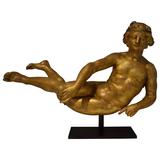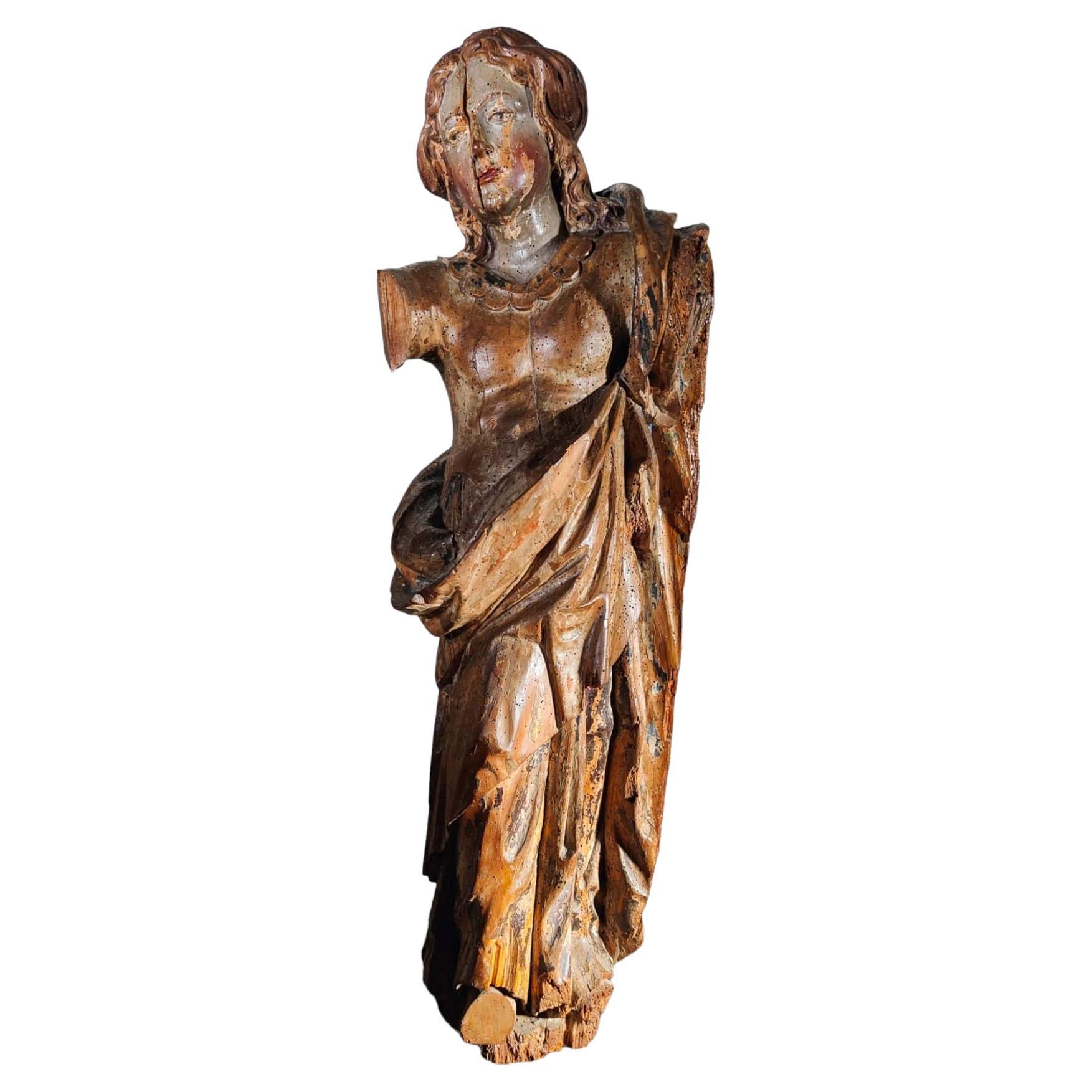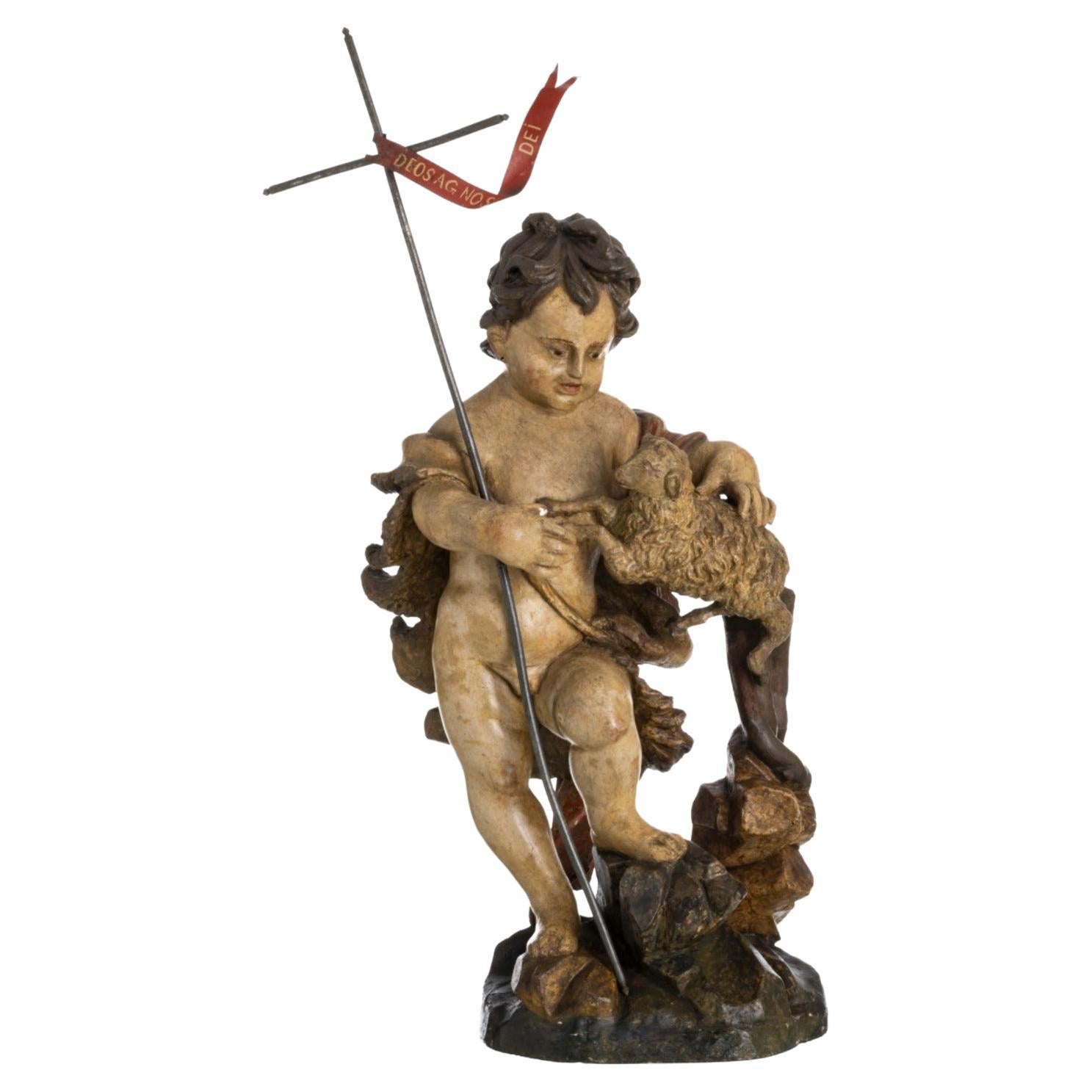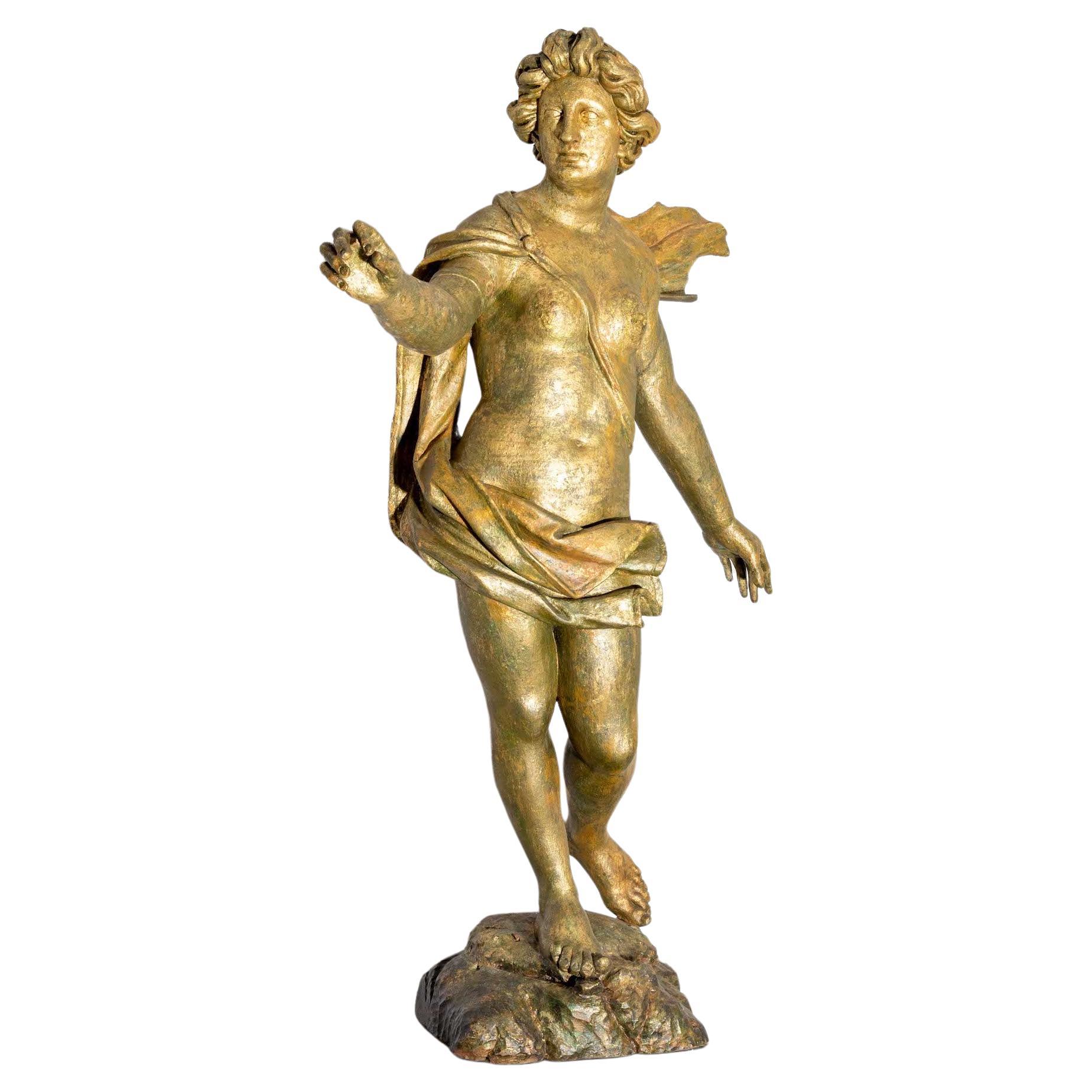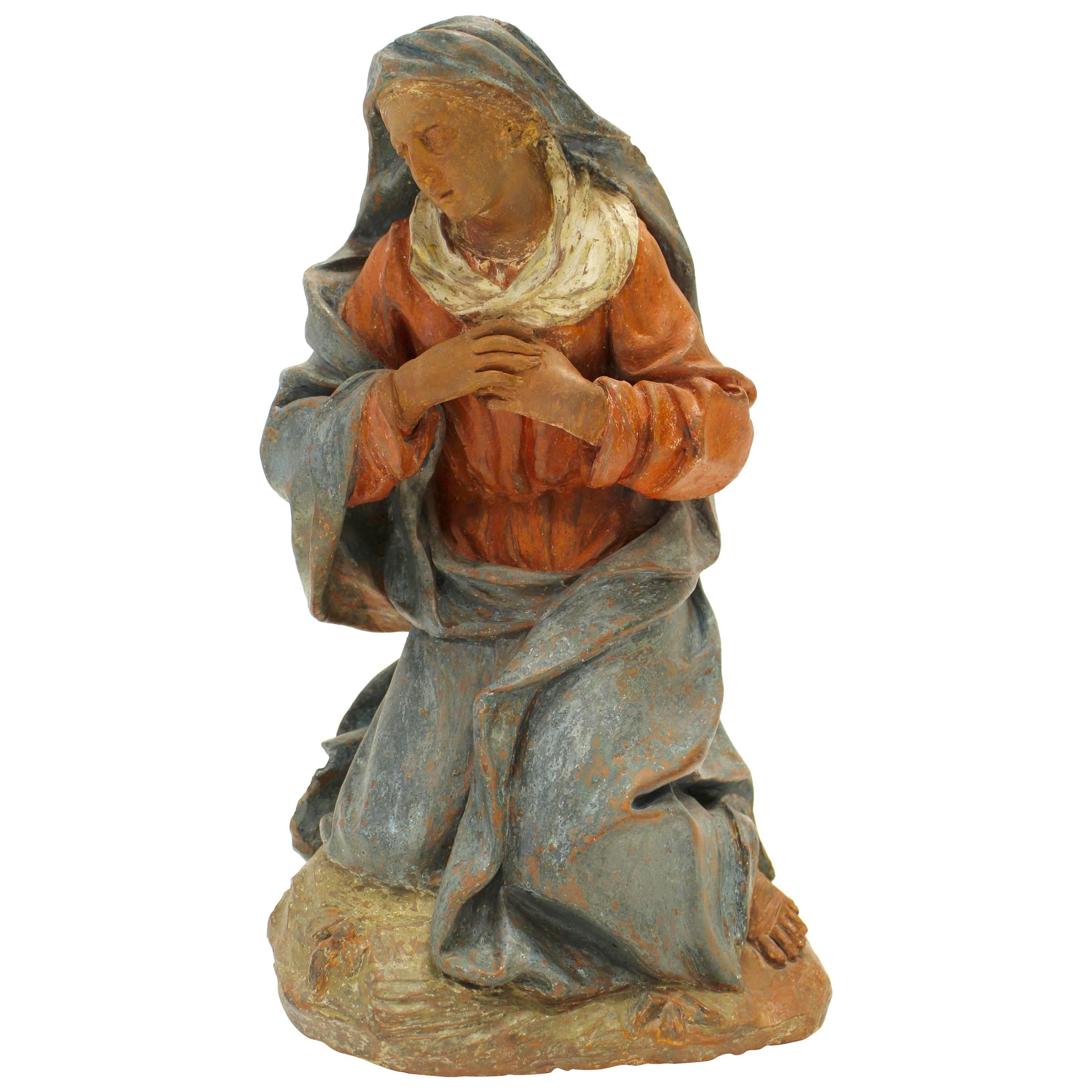Items Similar to 18th Century Personification of the Day Alabaster Sculpture
Want more images or videos?
Request additional images or videos from the seller
1 of 13
18th Century Personification of the Day Alabaster Sculpture
About the Item
18th century
Personification of the Day
Alabaster, cm 11.5 x 17.5 x 5
With base cm 14.5 x 20,8 x 11.7
Il Giorno is a marble sculpture (160x150 cm) that Michelangelo made between 1526 and 1531 in the New Sacristy in San Lorenzo in Florence. In particular it is one of the four allegories of the Parts of the Day, and is located to the right on the sarcophagus of the tomb of Giuliano de' Medici, Duke of Nemours.
Giuliano de' Medici, Duke of Nemours, the first figure of the Medici House to obtain a noble title, died in 1516 at the age of thirty-seven. Three years later his nephew Lorenzo, Duke of Urbino, also disappeared, extinguishing the legitimate lines of descent of the main branch of the family, to the great dismay of Pope Leo X (Giovanni de' Medici, brother and uncle of the two dukes, respectively)who had spent so much on the rise of his family. It was in these circumstances that the decision was made to entrust to Michelangelo the construction of a princely tomb for the two deceased offspring, to be inserted in the family church, San Lorenzo in Florence and which later took the name of New Sacristy. Having decided to make a twin environment to the oldest Old Sacristy of Brunelleschi, it was decided to bury in this new monumental shrine also the two "Magnifici", Lorenzo (m. 1492) and Giuliano (m. 1478), respectively father and uncle of the pope. The redesign of the New Sacristy began around 1519, and work began in 1521. After the interruption for the pope’s death, they resumed in 1524, when the artist, for the new Medici pontiff Clement VII, definitively established the architectural structure of the complex. Models for the tombs of the two "dukes" were prepared that year. The work lasted a long time and Michelangelo arrived at a solution with a smaller number of statues than planned: only three instead of five or seven. The Day was probably begun in 1526, when the tomb of Lorenzo was finished and that of Giuliano started. The statue had to be completed after the resumption of work following the forced pause of the siege of Florence and its consequences, being left to a state of conspicuous "non-finito" at the departure of the artist for Rome in 1534. The Day is represented as a male personification, half-stretched and naked, like the other statues in the series. It had as model, perhaps, the river deities of the arch of Septimius Severus, the Torso of the Belvedere of which resumed the powerful anatomical structure in tension. He also resumed the pose of the Child in the youthful Madonna della Scala and that of one of the bronze nudes in the vault of the Sistine Chapel. It is the only one, among the series of allegories, to give its back to the viewer, in a pose opposite to that of the nearby Night. The left elbow is bent in support, while the right arm stretches backwards to look for something: only the forearm is actually sculpted, the hand is lost in the unmarked part. The legs are overlapped in the opposite direction to the rotation of the torso and this screwing is also evidenced by the rotation of the head towards the viewer. The bearded face, just rough-hewn, shows only a mysterious expression, highly evocative and emblematic because of its incompleteness. The work has received numerous interpretations: political symbol of rebellion from slavery, or autobiographical theme of the drive towards freedom; symbol of Christian light or personification of life; allegory of fire or temper collerico; personification of action, pain, anger, contempt or revenge. The work in question is taken from the famous statue of Michelangelo and is located between the late eighteenth and early nineteenth century in the middle of the period of the Grand Tour during which the noble scions went to Italy to explore the beauty and build collections, Like those of the famous Charles Townley (1737-1805), who came to Italy four times, he accumulated an incredible amount of classical works including vases, bronzes and coins, to which was added a large library with manuscripts and prints. The artist follows the features of the statue without that sense of non-finto that pervades the work of Michelangelo, and fixes the plastic tension in a noble material such as alabaster, which gives the exemplary high quality and preciousness.
- Similar to:Michelangelo Buonarroti (Sculptor)
- Dimensions:Height: 4.73 in (12 cm)Width: 8.27 in (21 cm)Depth: 5.12 in (13 cm)
- Materials and Techniques:
- Period:
- Date of Manufacture:18th Century
- Condition:Wear consistent with age and use.
- Seller Location:Milan, IT
- Reference Number:1stDibs: LU5918233427722

About the Seller
5.0
Vetted Seller
These experienced sellers undergo a comprehensive evaluation by our team of in-house experts.
Established in 2000
1stDibs seller since 2021
25 sales on 1stDibs
Typical response time: 10 hours
- ShippingRetrieving quote...Ships From: Milan, Italy
- Return PolicyA return for this item may be initiated within 14 days of delivery.
More From This SellerView All
- First Half of the 18th Century Putti Pair of Sculptures in Gilded WoodLocated in Milan, ITFirst half of the 18th century, Lombardy Putti (2) gilded wood, H 88 cm The work is distinguished by the high artistic quality and the remarkable executive care, as eviden...Category
Antique Early 18th Century Italian Figurative Sculptures
MaterialsWood
- 18th Century Immaculate Madonna Terracotta SculptureLocated in Milan, IT18th century Immaculate Madonna Terracotta, 53 x 22 x 20 cm The work examined depicts the Virgin Mary treated according to the iconography of the Immaculate Virgin The theme of the Immaculate Conception began to appear in artistic works ever since the debate began, which saw the Franciscans and the ramifications of the Benedictine Order lined up on one side, linked to the thought of Anselmo d'Aosta and Bonaventura da Bagnoregio, and on the other the Dominicans, linked to the discussion offered by Thomas Aquinas...Category
Antique 18th Century European Figurative Sculptures
MaterialsTerracotta
- 18th Century Immaculate Conception with Saints Sculpture MarbleLocated in Milan, IT18th century Immaculate Conception and saints Marble, 60 x 50 x 9 cm In the center of the marble oval we find an Immaculate Conception accompanied by St. Vincent Ferrer (identifiable thanks to the presence of the wings and the Dominican dress), and by two saints of difficult identification, one of them with a monastic habit. The theme of the Immaculate Conception began to appear in artistic works ever since the debate began, which saw the Franciscans and the ramifications of the Benedictine Order lined up on one side, linked to the thought of Anselmo d'Aosta and Bonaventura da Bagnoregio, and on the other the Dominicans, linked to the discussion offered by Thomas Aquinas...Category
Antique 18th Century Italian Figurative Sculptures
MaterialsMarble
- 18th Century Sant'antonio Abate Sculpture in WoodLocated in Milan, IT18th Century Sant’Antonio Abate Wood, cm alt. 61 Base 25 x 17.5 cm This wooden sculpture depicts Sant’Antoni Abate. Antonio was born in Come i...Category
Antique 18th Century Italian Figurative Sculptures
MaterialsWood
- 20th Century Reclining Woman with Sphinx Sculpture AlabasterLocated in Milan, IT20th Century Reclining woman with Sphinx Alabaster, 43 x 60 x 25 cm The sculpture depicts a young and charming odalisque lying languidly on a refined sheet. The face with d...Category
20th Century Italian Figurative Sculptures
MaterialsAlabaster
- Sculpture depicting Dante and Beatrice, Alabaster, 20th centuryLocated in Milan, ITDante and Beatrice Alabaster, 33 x 20 x 36 cm Early 20th century The present alabaster relief, of which great technical skill is evident, imitates the pages of a book, On the two...Category
20th Century Figurative Sculptures
MaterialsAlabaster
You May Also Like
- 18th Century Giltwood Sculpture of a Female NudeBy Michelangelo BuonarrotiLocated in New York, NYThis giltwood sculpture was carved in the round, probably in southern France or northern Italy in the 1760s. Her pronounced musculature speaks to the ongoing influence of Michelange...Category
Antique Mid-18th Century French Neoclassical Mounted Objects
MaterialsBronze
- 18th Century Wooden Sculpture of the Virgin MaryLocated in Madrid, ESThis exceptional sculpture, finely carved from solid wood and dating back to the 18th century, pays tribute to the devotion and artistic skill of its era. Depicting the Virgin Mary, ...Category
Antique 1740s Figurative Sculptures
MaterialsFruitwood
- Saint John the Baptist Sculpture, 18th CenturyBy Europa AntiquesLocated in Madrid, ESSaint John the Baptist 18th century Portuguese sculpture from the 18th century. in polychrome wood. The figure is represented standing with the lamb. Small flaws. Measure: ...Category
Antique 18th Century Portuguese Renaissance Figurative Sculptures
MaterialsWood
- Baroque Sculpture, 18th CenturyLocated in Greding, DEPatinated baroque sculpture on a stylised landscape base in the form of a female figure with a flowing cloak and an expansive gesture. Provenance: Wittelsbach estate.Category
Antique 18th Century Baroque Figurative Sculptures
MaterialsWood
- Mid-18th Century French Alabaster Sculpture Depicting a Female Nude with AnchorLocated in Milan, ITAlabaster sculpture depicting a female nude with cloak and hat, with clasped hands and resting her foot on an anchor, as if to invoke protection for the sailors; French manufacture o...Category
Antique 1760s French Nautical Objects
MaterialsAlabaster
- 18th Century Continental Polychrome Terracotta Sculpture of the Kneeling VirginLocated in Palm Desert, CAA 17th-18th century continental painted terracotta sculpture of a kneeling Virgin in the manner of Angolo di Poli. This exquisite terracotta sculpture features a poignant depiction of the Virgin Mary. The red and blue clothes...Category
Antique Early 18th Century European Figurative Sculptures
MaterialsTerracotta
Recently Viewed
View AllMore Ways To Browse
Eighteenth Century Furniture
18th Century Church
Early Eighteenth Century
18th Century Italian Bronze
Head Of The Charles
Build Antique Furniture
Complete Library
Antique Furniture Nearby
Small Alabaster
Christian Carved
Church Polish
Siege Of
Medici Large
Lorenzo Medici
Alabaster Collection
Church Model
Polish Noble
Large Alabaster Light
